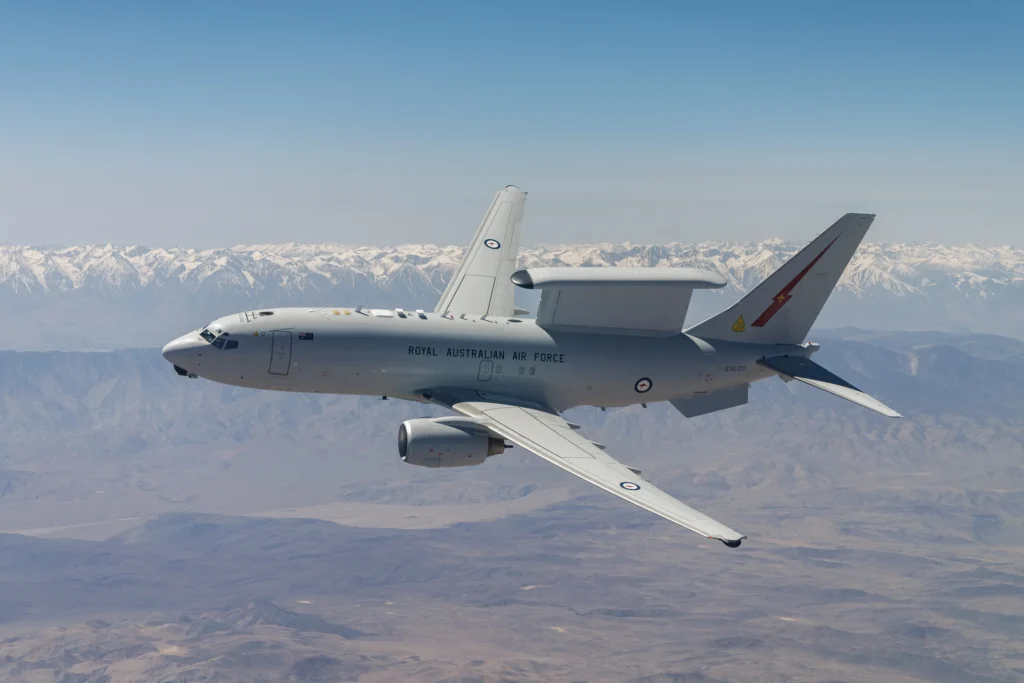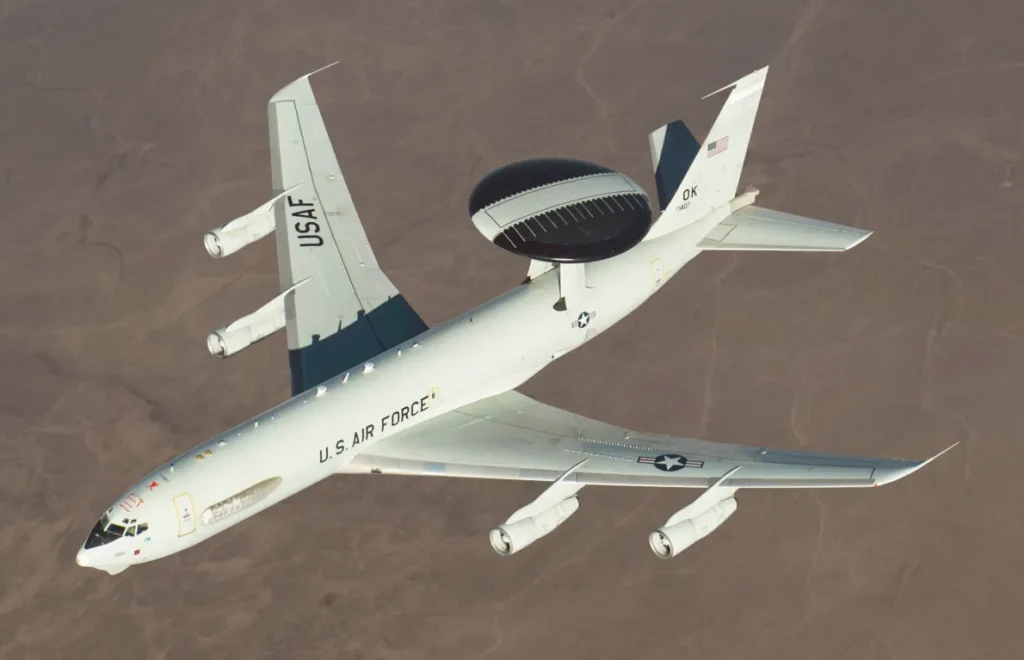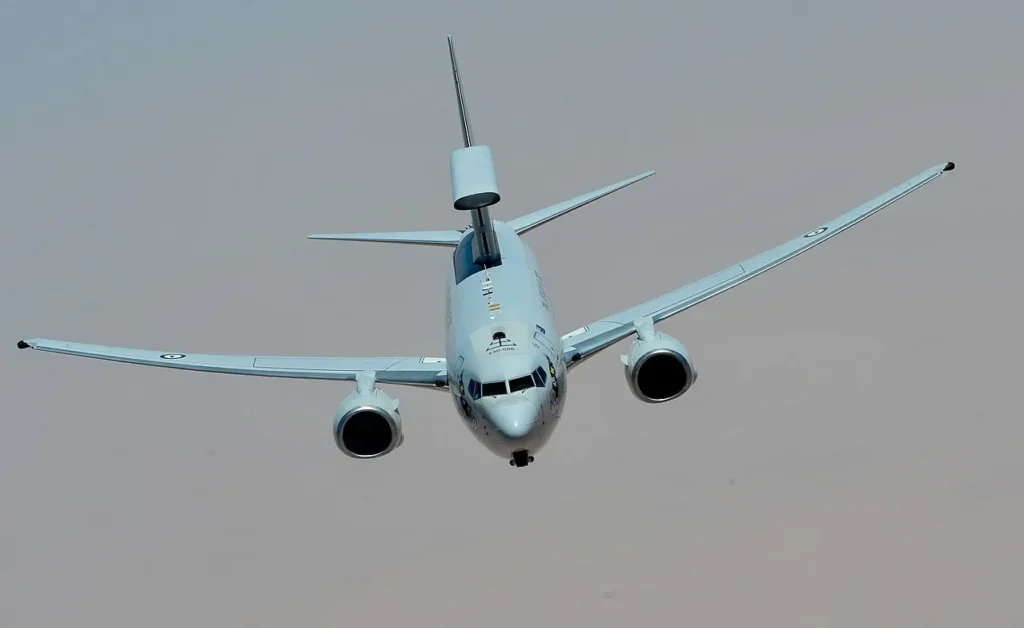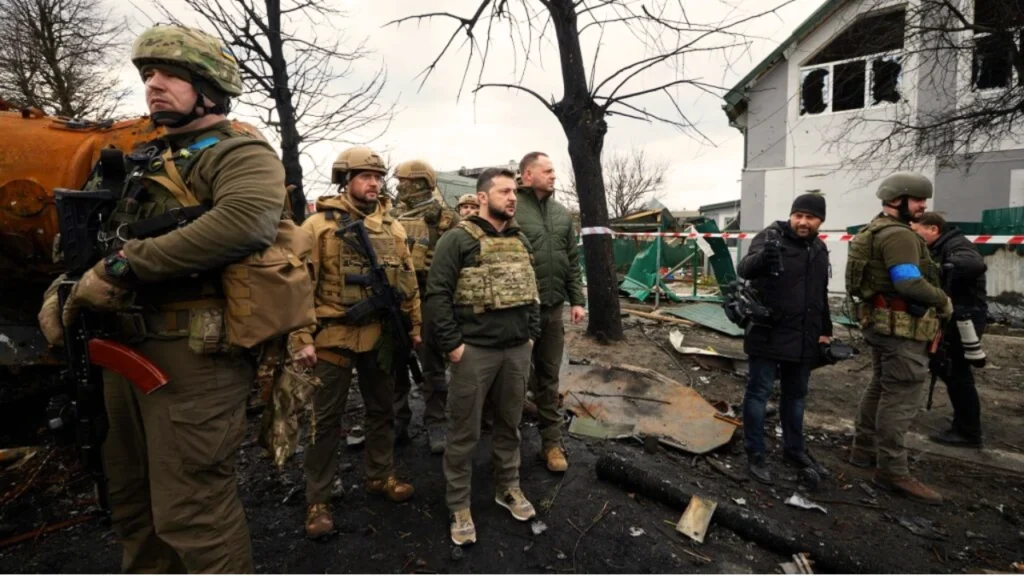
WASHINGTON- US Defence Secretary Pete Hegseth expressed scepticism about the Air Force’s E-7 Wedgetail aircraft procurement program during Tuesday’s House Appropriations Subcommittee on Defence hearing.
Hegseth advocated for space-based intelligence, surveillance, and reconnaissance capabilities as superior alternatives to traditional airborne battle management systems.
 Royal Australian Air Force E-7A Wedgetail; Photo- Wikipedia
Royal Australian Air Force E-7A Wedgetail; Photo- WikipediaUS Air Force Defence Hearing
The Defence Secretary’s position creates potential conflict with Air Force leadership and congressional supporters who maintain that airborne assets remain essential for battlefield management operations. This disagreement signals emerging tensions between Pentagon leadership and service-specific procurement priorities.
The Air Force plans to purchase 26 Boeing-manufactured E-7 Wedgetail aircraft to replace its deteriorating fleet of E-3 Sentry airborne warning and control system (AWACS) planes.
Australia has operated E-7 aircraft successfully for years, while the United Kingdom and other allied nations have committed to acquiring the platform.
The current E-3 AWACS fleet, distinguished by its prominent radar dome mounted above the fuselage, has served since the late 1970s. The ageing aircraft approach end-of-life status while their capabilities increasingly fall short of modern operational requirements.
 E-3 Sentry Airborne Warning and Control System (AWACS); Photo- Wikipedia
E-3 Sentry Airborne Warning and Control System (AWACS); Photo- WikipediaWhite House to Cancel E-7 Program
Recent reports indicate the White House seriously considers cancelling the Air Force’s E-7 procurement plans in favour of space-based alternatives.
This potential decision reflects broader Pentagon research into transferring Moving Target Indication (MTI) capabilities from aircraft to satellite platforms.
Moving Target Indication (MTI) technology uses radar and other sensors to identify, track and distinguish targets from friendly or civilian assets. Pentagon officials acknowledge that satellite-based demonstrations have not yet provided sufficient data to support definitive conclusions about space system viability.
 Air controllers aboard a US E-3 during Operation Provide Comfort; Photo- Wikipedia
Air controllers aboard a US E-3 during Operation Provide Comfort; Photo- WikipediaCongress Supports E-7 Program
Oklahoma Republican Representative Tom Cole, whose district includes Tinker Air Force Base housing 16 remaining E-3 aircraft, emphasised the importance of E-7 acquisition during the hearing. Cole stressed that aircraft capabilities will remain necessary even after space-based systems become operational.
Cole highlighted the E-7’s proven track record, noting that Australian and British forces successfully operate the platform. The Representative characterised the E-7 as substantially superior to current AWACS capabilities and representing established rather than experimental technology.
 RAAF Wedgetail flying over the Middle East, 2017; Photo- Wikipedia
RAAF Wedgetail flying over the Middle East, 2017; Photo- WikipediaUkraine War & Chinese Military
Hegseth justified the Pentagon’s investment reconsideration by referencing lessons learned from the Ukraine conflict and observations of Chinese military advancement. The Defence Secretary emphasised the need to fund systems capable of surviving modern warfare while providing decisive advantages.
Hegseth stated that platforms unable to meet survivability standards or provide sufficient tactical advantages require immediate decision-making. The Defence Secretary committed to robust funding for existing platform modernisation while prioritising space-based ISR investments.
 Photo: War Room Army War College
Photo: War Room Army War CollegeDual-Track Approach
Hegseth outlined the Pentagon’s strategy of maintaining existing airborne capabilities while investing heavily in space-based intelligence systems. The approach aims to provide operational continuity during the transition period while developing superior future capabilities.
The Defence Secretary expressed willingness to continue reviewing E-7 procurement decisions while maintaining focus on space-based advantages for future battlefield operations. This position suggests ongoing evaluation rather than immediate program termination.
Air Force Leadership
Air Force Chief of Staff General David Allvin stated during a separate May 6 hearing that satellites cannot yet assume all airborne moving target indication responsibilities. Allvin acknowledged satellite sensing capabilities while maintaining their current operational limitations.
Former Air Force Secretary Frank Kendall identified specific technical challenges facing satellite-based systems in a May Defence News interview. Kendall cited power requirements, cloud penetration capabilities and enemy attack resistance as unresolved issues requiring years of development.
 Gen. David W. Allvin, Air Force Chief of Staff; Photo- Chairman of the Joint Chiefs of Staff | Flickr
Gen. David W. Allvin, Air Force Chief of Staff; Photo- Chairman of the Joint Chiefs of Staff | FlickrTimeline Concerns
Kendall warned that space-based moving target indication systems would require extensive development periods exceeding E-3 retirement timelines. This temporal mismatch creates potential capability gaps if the Air Force abandons E-7 procurement without ready space-based alternatives.
The Air Force declined to provide official comments regarding Hegseth’s E-7 remarks following the congressional hearing. Cole acknowledged Hegseth’s strategic reasoning while urging caution in procurement decision modifications, emphasising the E-7’s proven operational effectiveness compared to undeveloped space alternatives.
Stay tuned with us. Further, follow us on social media for the latest updates.
Join us on Telegram Group for the Latest Aviation Updates. Subsequently, follow us on Google News
US Air Force Announced Plans To Purchase 26 E-7 Jets From Boeing | Exclusive
The post US Defense Secretary Questions Boeing E-7 Aircraft Purchase appeared first on Aviation A2Z.







![Policja w Sielpi już działa [wideo, zdjęcia]](https://tkn24.pl/wp-content/uploads/2025/06/Policja-na-Sielpi-juz-dziala-3.jpg)




